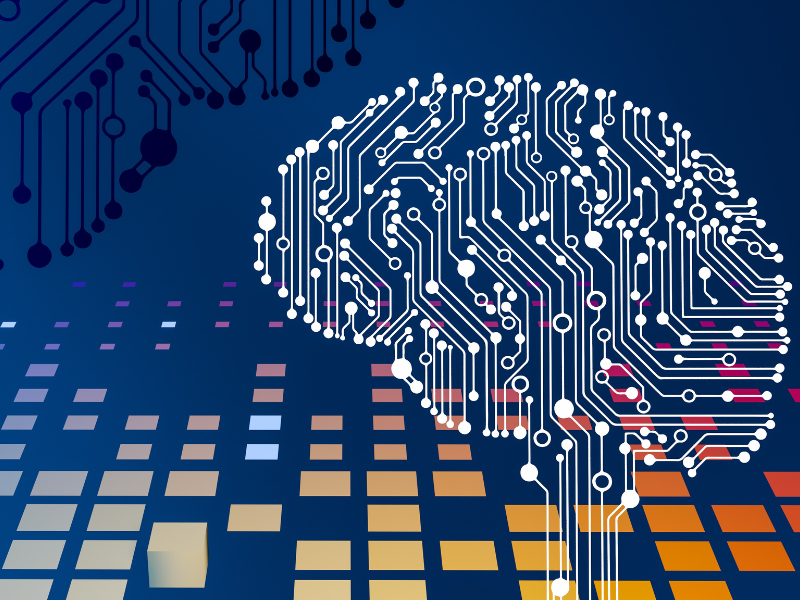David Letsa, MD
Artificial intelligence (AI) and machine learning algorithms can provide advanced practice providers (APPs) valuable insights into personalized cancer care. Additionally, machine learning can assist in the early detection and diagnosis of cancer, leading to timely and targeted interventions.1
Harnessing the Power of AI to Augment Human Capabilities in Health Care
Integrating AI with human capabilities has proven highly beneficial in various fields, including oncology, radiology, and primary care. A noteworthy example involves the development of a breast cancer prediction algorithm using an enormous dataset of 38,444 mammogram images from 9,611 women. This Extreme Gradient Boosting or XGBoost algorithm has the unique ability to combine imaging data with electronic health records (EHR) to predict the risk of malignancy and accurately distinguish between normal and abnormal screening results.
This algorithm performs at a comparable level to experienced radiologists assessing breast cancer. This combined machine learning and deep learning model, trained on linked mammograms and health records, is a valuable tool for radiologists as a second reader in detecting breast cancer. That exemplifies how AI augments human capabilities, providing actionable insights that can revolutionize medicine.2
Machine learning is an umbrella term referring to the use and development of computer systems that can learn and adapt without following explicit instructions, by using algorithms and statistical models to analyze and draw inferences from patterns in data. Deep learning is a type of machine learning based on artificial neural networks in which multiple layers of processing are used to solve complex problems. Machine learning and its subdiscipline, deep learning, show great promise in the health care domain.
The following are other examples of how AI impacts the changes and developments in disease:
Oral cancers: Machine learning models can assist clinicians in predicting progressive disease outcomes. Four of these models, linear regression (LR), decision tree (DT), support vector machine (SVM), and k-nearest neighbors (KNN), were used to analyze a dataset of 408 oral squamous cell carcinoma patients. It had a 70.59% accuracy.3
Cutaneous tumors: A deep learning algorithm was tested on 12 skin diseases using clinical photos. The algorithm performed well, with an area under the curve (AUC) ranging from 0.82 to 0.96 for diagnosing basal, squamous, or intraepithelial carcinoma, and melanoma. Compared to 16 dermatologists, the algorithm demonstrated similar performance with 480 images. Collecting more diverse photos with different ages and ethnicities is recommended to improve its performance.4
Gastrointestinal cancers: The Gastrointestinal Artificial Intelligence Diagnostic System (GRAIDS) was made for analyzing upper gastrointestinal cancers with imaging data from clinical endoscopies from Sun Yat-sen University Cancer Center. It had an accuracy of 95%.5
Liver cancers: A watershed Gaussian-based deep learning (WGDL) technique was used to analyze 255 medical images and for automated classification of three types of liver cancer: hemangioma (HEM), hepatocellular carcinoma (HCC) and metastatic carcinoma (MET). It has an accuracy of 99.38%, and it can aid radiologists in detecting liver cancer using CT images.6
Bladder tumors: Adequate tumor detection is crucial in complete transurethral resection of bladder tumors (TURBT) to reduce cancer recurrence. However, up to 20% of bladder tumors are missed by standard white light cystoscopy. CystoNet, an image analysis platform based on convolutional neural networks, was used for automated bladder tumor detection. The deep learning algorithm had a sensitivity of 90.9% using a dataset of 95 patients.7
Ensuring Data Security, Transparency, and Trust in AI Adoption for Healthcare
Adopting AI in health care requires ensuring data security, analytics insights, and shared expertise. Ensuring transparency and trust in AI systems’ training methods and the reliability of the data and knowledge used is crucial for building confidence in their capabilities and protecting patient data. While the principles of data and security, analytics and insights, and shared expertise guide the successful adoption of AI in health care, health care providers should exercise caution. This pertains to the recent advancements in AI and does not include the FDA-approved AI currently in use.
Transparency, trust, and validating AI-generated insights with human expertise are integral to safely integrating AI into health care practice. By understanding the limitations and leveraging the benefits of AI, APPs can enhance patient care while maintaining ethical and responsible healthcare delivery.8
Significance of AI Impacting Disease Progression in the Future
The evolution and integration of AI technology with healthcare systems are expected to significantly impact the understanding and managing of disease progression, ushering in a new era of proactive and personalized healthcare. The impact of AI in the future cannot be overstated in terms of its significance in impacting disease progression.
By leveraging these technologies, APPs can enhance the quality of care and personalized treatment plans based on individual patient characteristics. It enables APPs to provide more precise and tailored patient care, facilitate early cancer detection, and collaborate effectively with multidisciplinary teams. Understanding and utilizing AI technologies is vital for APPs to maximize their impact and improve patient outcomes in personalized cancer care.
References
- Hamet, P., & Tremblay, J. (2017). Artificial intelligence in medicine. Metabolism: clinical and experimental, 69S, S36–S40.
- Akselrod-Ballin, A., Chorev, M., Shoshan, Y., Spiro, A., Hazan, A., Melamed, R., Barkan, E., Herzel, E., Naor, S., Karavani, E., Koren, G., Goldschmidt, Y., Shalev, V., Rosen-Zvi, M., & Guindy, M. (2019). Predicting Breast Cancer by Applying Deep Learning to Linked Health Records and Mammograms. Radiology, 292(2), 331–342.
- Chu, C. S., Lee, N. P., Adeoye, J., Thomson, P., & Choi, S. W. (2020). Machine learning and treatment outcome prediction for oral cancer. Journal of oral pathology & medicine : official publication of the International Association of Oral Pathologists and the American Academy of Oral Pathology, 49(10), 977–985.
- Han, S. S., Kim, M. S., Lim, W., Park, G. H., Park, I., & Chang, S. E. (2018). Classification of the Clinical Images for Benign and Malignant Cutaneous Tumors Using a Deep Learning Algorithm. The Journal of investigative dermatology, 138(7), 1529–1538.
- Luo, H., Xu, G., Li, C., He, L., Luo, L., Wang, Z., Jing, B., Deng, Y., Jin, Y., Li, Y., Li, B., Tan, W., He, C., Seeruttun, S. R., Wu, Q., Huang, J., Huang, D. W., Chen, B., Lin, S. B., Chen, Q. M., … Xu, R. H. (2019). Real-time artificial intelligence for detection of upper gastrointestinal cancer by endoscopy: a multicentre, case-control, diagnostic study. The Lancet. Oncology, 20(12), 1645–1654.
- Das, A., Acharya, U. R., Panda, S., & Sabut, S. (2019). Deep learning-based liver cancer detection using watershed transform and Gaussian mixture model techniques. Cognitive Systems Research, 54, 165–175.
- Shkolyar, E., Jia, X., Chang, T. C., Trivedi, D., Mach, K. E., Meng, M. Q., Xing, L., & Liao, J. C. (2019). Augmented Bladder Tumor Detection Using Deep Learning. European urology, 76(6), 714–718.
- Amann, J., Blasimme, A., Vayena, E., Frey, D., Madai, V. I., & Precise4Q consortium (2020). Explainability for artificial intelligence in healthcare: a multidisciplinary perspective. BMC medical informatics and decision making, 20(1), 310.

David Letsa, MD, is a medical doctor and medical writer. Dr. Letsa completed his medical degree at Semmelweis University and held certificates in global health innovation & entrepreneurship from the Barcelona Institute for Global Health (ISGlobal) and Health-based Artificial Intelligence Online Training from GE Healthcare. He believes in providing accurate health information and accessibility for patients. Find David on LinkedIn.







